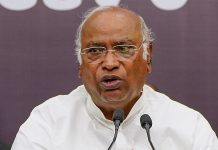
A few months ago, in the run-up to the Bihar Assembly election, Chief Minister Nitish Kumar claimed that the state clocked an average 10 percent growth under his decade-long stewardship. He hinted that one of the foremost reasons for the growth was the “remarkable improvement in the law and order situation” in the state.
“We have established the rule of law in Bihar. Fear has vanished from the minds of citizens…they can go anywhere, anytime as per their needs,” he added rather arrogantly. The implication of these statements: growth jumped as the business community felt confident to invest in the state.
This socio-politico-economic connection between governance, safety, investment and growth was articulated by economists in 2010, soon after the end of Nitish’s first tenure as the chief minister. The logic was simple — before 2005, there was a ‘jungle raj’ in Bihar, wealthy people were scared of kidnappings, extortions and murders and, therefore, either pulled out their money or put it in safe custody in banks. Resultantly, a negative investment climate pulled down growth.
In February 2010, Swaminathan Aiyar wrote in one of his columns, “The old cloud of fear has been replaced by peace and confidence. Safety has allowed small businesses to burst into activity.” In the same piece, he added, “In Lalu’s time, anybody building a house or booking a car promptly got a ransom note. Today, home construction and car sales are booming. Traffic jams have replaced deserted streets.”
However, is Nitish’s assertion enough to explain the decade-long economic miracle in Bihar? Are there additional factors, as important as public safety, which propelled the boom in Bihar? Is there more to this phenomenal narrative than meets the eye?
Statistics: true or false
A few experts believe that there may be statistical massaging to show higher growth rates. After all, it is the states that provide the data to the Central Statistical Organisation, which collates and presents the final figures. Thus, some of the figures related to specific sectors may be fudged by the state’s politicians, who wish to project Nitish’s positive image. This allegation becomes important because Bihar’s sector-wise numbers have wildly fluctuated over the past 15 years.
As per Bihar’s 2014-15 Economic Survey, the figures for the primary sector, which includes agriculture and mining, jumped from a negative 0.4 percent between 2000-01 and 2004-05 to 4.4 percent over the next five years (2005- 06 to 2009-10). But they slumped to 3.8 percent over the next four years (2010- 11 to 2013-14). This also happened with the secondary sector, which includes manufacturing, construction and public utilities. The growth, which stood at 5.8 percent in the pre-Nitish period, jumped to 16.7 percent during his first rule and fell to 4.7 percent during his second tenure.
There were huge swings in the case of specific sectors too. The figures for railways were a negative 5.8 percent, 7.6 percent and 0.2 percent respectively, for the three periods. In communications, they were 13.8 percent, 24.7 percent and 16.4 percent respectively. Only a few sectors, such as banking and insurance and real estate and trade (hotels and restaurants) showed higher growth rates consistently over the three five-year periods.
What’s more important is that several other states grew faster than Bihar over the past 10 years. An article on Statisticstimes, a data collection website, showed that the state ranked seventh in terms of average growth rates during the 2005-14 period. Some experts contend that Nitish Nitish was a lucky chief minister, like many others, as several states witnessed resurgence in growth over the past decade or so. During the 2004-15 period, 14 states and union territories showed an average growth rate of over 9 percent; another 18 grew by over 8 percent.
Yet another factor that needs to be considered is that the original state of Bihar was bifurcated in November 2000, when a separate state of Jharkhand was carved out of it. Instantly, Bihar lost huge chunks of natural resources, especially in mining, to the new state. Obviously, its economy slumped as it lost out on a huge portion of income that contributed to its gdp. At the time, the local business community tried hard to seek other alternatives to raise their revenues.
The construction conundrum
Two of the biggest booms that followed after Nitish’s handling of the ‘law and order’ situation were in construction and manufacturing. The logic was that heightened public safety and security instantly translated into huge investments in these two sectors. Contractors felt safe to work even in remote areas and businessmen felt comfortable to both show their wealth off and expand business. Automatically, this led to a consumption boom as people were not scared to flash their latest cars and other materialistic acquisitions.
A look at the figures proves that this was indeed true during the first five years of Nitish’s rule. The growth rate in construction was 19.8 percent between 2005- 06 and 2009-10 and for manufacturing, the figure stood at 13.3 percent. However, the scenario changed dramatically over the next four years — construction grew by 6.6 percent and manufacturing dipped by 1.1 percent. If one links governance and safety with growth, this can mean two things: either the public felt less safe during Nitish’s second term or other reasons were responsible for the booms in his first term.













